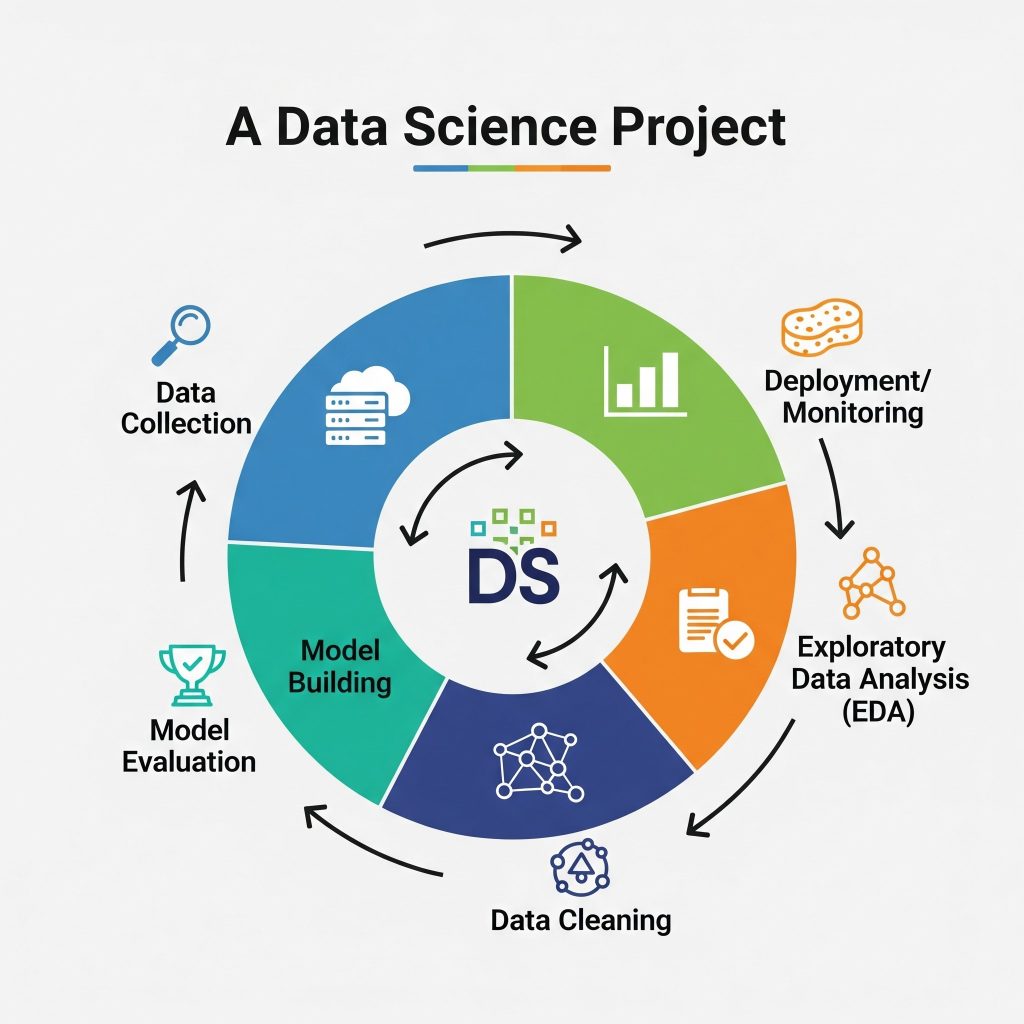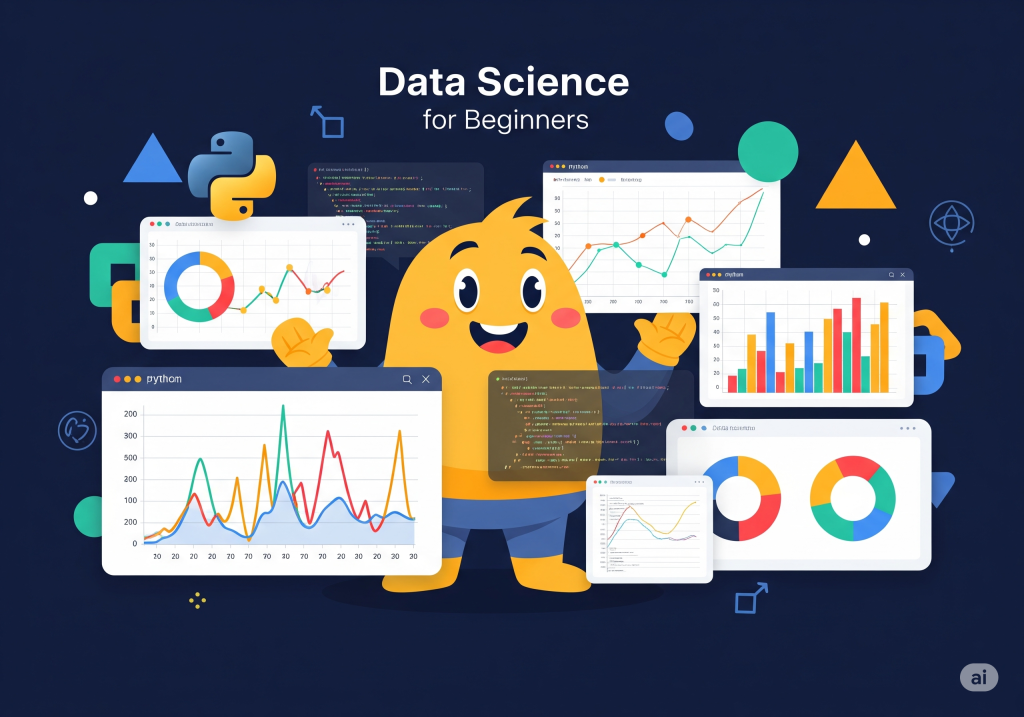Introduction: Why Data Science Matters More Than Ever
In today’s information-driven world, data is considered the new oil. But what transforms raw data into meaningful insights is Data Science—a powerful blend of algorithms, statistics, and machine learning. For beginners, understanding data science is no longer optional—it’s the gateway to becoming future-ready.
Whether you’re from a technical or non-technical background, this blog is crafted to help you understand the essentials of data science, the tools involved, and how to kickstart your journey.
📘 What Is Data Science?
Data science is an interdisciplinary field that uses scientific methods, algorithms, and systems to extract knowledge from structured and unstructured data.
🔍 Key Components of Data Science:
- Data Collection – Gathering raw data from various sources
- Data Cleaning – Removing inconsistencies or errors
- Data Analysis – Identifying trends and relationships
- Data Visualization – Communicating insights via graphs/charts
- Model Building – Using algorithms for prediction and automation

🧠 Why Learn Data Science as a Beginner?
1. High Demand Across Industries
From healthcare to finance, every industry is leveraging data science. Even small businesses rely on analytics to stay competitive.
2. Lucrative Career Paths
According to Glassdoor, data science remains one of the highest-paying roles globally.
3. Low Entry Barrier
Thanks to online courses, bootcamps, and free resources, you don’t need a Ph.D. to get started anymore.
🧰 Essential Tools & Technologies for Beginners
| Tool | Use Case |
|---|---|
| Python | Scripting, data wrangling, ML |
| R | Statistical computing |
| SQL | Querying structured databases |
| Tableau | Data visualization |
| Pandas | Data manipulation in Python |
| Jupyter | Interactive coding environment |
🎯 Step-by-Step Roadmap to Learn Data Science
Step 1 – Learn the Basics of Python or R
Start with Python due to its community support and simplicity. Platforms like Kaggle and Coursera offer beginner-friendly courses.
Step 2 – Master Statistics & Probability
Understanding mean, median, standard deviation, and probability lays the foundation.
Step 3 – Work on Real-Life Datasets
Use open-source data from UCI Repository or Data.gov.
Step 4 – Explore Data Visualization
Tools like Matplotlib, Seaborn, and Tableau help you create compelling visuals.
Step 5 – Practice Machine Learning Models
Start with regression, classification, and clustering using Scikit-learn.
🚀 Tips to Succeed in Your Data Science Journey
- Start small but stay consistent
- Join data science communities like Stack Overflow, Reddit, or DataCamp forums
- Build a GitHub portfolio with mini-projects
- Read research papers or follow blogs like Towards Data Science
- Participate in hackathons or Kaggle competitions
📌 Conclusion: The First Step Towards a Data-Driven Future
Even if you’re starting from scratch, data science is not beyond your reach. With structured learning and continuous practice, you can evolve into a data-savvy professional. So take the leap today—your future self will thank you.


